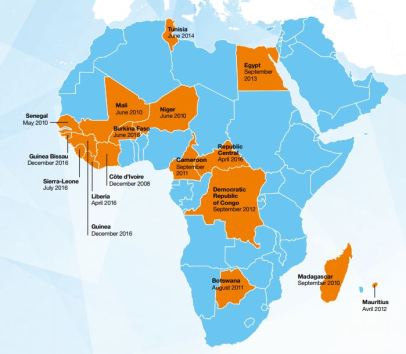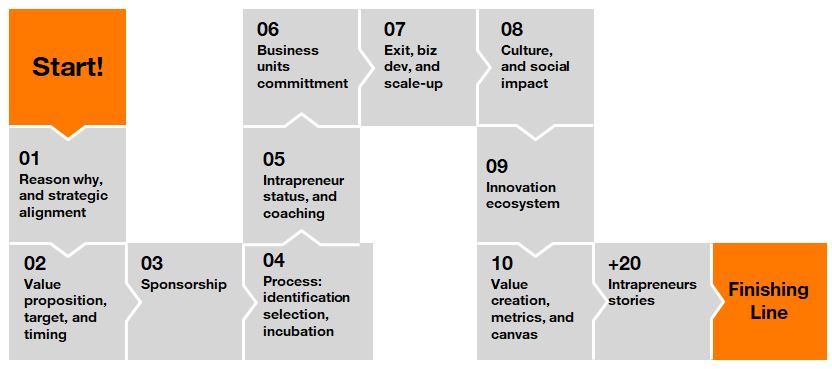
GUEST POST from Arlen Meyers
Rheology is the study of flow. There are many ways to measure flow. For example, Volume Flow is defined as the volume quantity that flows through a given section at a considered time interval. The most common volume units are:m3/s, m3/h, l/h, l/min, GPM (gallons per minute), Nm3/h (normal cubic meter per hour), SCFH (normal cubic foot per hour), among others.
Information rheology is the study of how information passes from the sender to the receiver, the resistance to that flow, and how to address it.
The concept applies also to how products and services flow from one place in the world to another.
A reverse innovation is any innovation that is adopted first in the developing world. To be clear: What makes an innovation a reverse innovation has nothing to do with where the innovators are, and it has nothing to do with where the companies are. It has only to do with where the customers are.
Historically, reverse innovation has been a rare phenomenon. In fact, the logic for innovations flowing downhill, from the rich world to the developing world, is natural and intuitive. After all, it is the richest customers in the richest countries that will always demand the newest technologies. In due time, the costs of new technologies come down, and incomes in the developing world rise. As a result, innovations trickle down. Right?
Be careful. The intuitive assumption that poor countries are engaged in a process of gradually catching up with the rich world has become toxic. It is a strategic blind spot that has the potential to sink an increasingly common aspiration: to generate high growth in the emerging economies. The assumption can even inflict long-term damage in home markets. That is because surprisingly often, reverse innovations defy gravity and flow uphill to the rich world. As a result, a defeat in a developing country half a world away can lead directly to a stinging blow in your own back yard.
How information flows, like on cell phones during riots and protests, is not an exact science. Percolation theory illuminates the behavior of many kinds of networks, from cell phone transmissions to the COVID R number.
Most discussions of innovation ecosystem creation and growth focus on the anatomy i.e. the components necessary to be successful. For example, one author describes the 5P’s of human capital:pillars, patrons, pioneers, professionals and partners.
However, equally as important is the physiology of clusters -how the cluster elements work together .One of the key determinants of an innovative organization or cluster is information rheology. There are three basic elements to the equation.
The first has to do with the number of nodes in the network, both internally and externally. Network theory tells us that the more nodes, the more value. Having one fax machine in the world added nothing. It took a lot to unleash the value , as the development of social media has exemplified.
The second has to do with how the nodes are connected. Some are robust and some are not. The connections between the nodes are called edges.
Finally, and most importantly, the two previous parts are not nearly as important as the velocity, relationships, acceleration and lack of resistance to the flow of information from one node to the next. We usually refer to this as a cluster or innovation district being “user friendly” and is typified by the free and rapid flow of information from one place to the next. Malcolm Gladwell described facilitators in the process as mavens, experts and connectors.
There are many causes of poor information flow, but, fundamentally, they come down to :
- 1. The sender does not communicate effectively or in a an appropriate way
- The receiver is unaware that the message was sent or does not understand it
- The systems for transmitting information and verifying receipt are inadequate
- Third party interference muddles the message
Poor information flow in sickcare results in dropped handoffs and referral leaks which are the primary causes of medical errors and waste. The lack of data interoperability is one of the root causes.
There are several kinds of intermediaries that facilitate information flow in an ecosystem.
- Architects engage in strict agenda-setting and coordination activities
- Gatekeepers support the knowledge extraction and dissemination of the information
- Conductors take care of information acquisition, transmission, and task sharing
- Developers create concrete assets for the network based on knowledge mobility
- Auctioneers set the agenda and joint vision for the innovation network
- Leaders motivate and foster the voluntary collaboration and identifying roles of network members
- Promoter support ecosystem members to work towards the same goal
- Facilitator bring together quite different, even competing, parties to work together
Whether it is making clinical handoffs better or improving the flow of information in an ecosystem or cluster, the obstacles are substantial and the systems for preventing information flow blockage need to constantly be maintained, which can be costly and time consuming.
If you want to accelerate regional innovation clusters and communities, don’t concentrate so much on connecting the senders and receivers. Focus on removing the barriers to the flow of information and how to push and pull it through the pipes.
![]() Sign up here to get Human-Centered Change & Innovation Weekly delivered to your inbox every week.
Sign up here to get Human-Centered Change & Innovation Weekly delivered to your inbox every week.













